Front view woman wearing trucker hat.
Through a wide variety of mobile applications
- Client Nusrat Nill
- Date 25 June 2021
What I Offer?
Smart, scalable, and secure software crafted for your business needs.
Building fast, secure, and user friendly apps for web and mobile platforms.
Creating sleek, engaging, and intuitive designs for seamless user experiences.
Harnessing AI, blockchain, and IoT to shape the future of innovation.
Bringing ideas to life with immersive and high performance gaming solutions.
Optimizing scalability, security, and efficiency with cloud based solutions.
Protecting your digital assets with advanced security and risk management.
Improving your brand’s visiblity with data driven marketing strategies.
Visit my portfolio and keep your feedback
Through a wide variety of mobile applications

A strategy is a general plan to achieve one or more long-term.
UI/UX Design, Art Direction, A design is a plan or specification for art.
Lorem ipsum dolor sit amet, consectetur adipiscing elit, sed do eiusmod tempor incididunt ut labore et dolore magna aliqua. Quis ipsum suspendisse ultrices gravida. Risus commod viverra maecenas accumsan lacus vel facilisis. ut labore et dolore magna aliqua.
However, if you can precisely spot such toxic stocks, you may gain by resorting to an investing strategy called short selling. This strategy allows one to sell a stock first and then buy it when the price falls.
While short selling excels in bear markets, it typically loses money in bull markets.
So, just like identifying stocks with growth potential, pinpointing toxic stocks and offloading them at the right time is crucial to guard one’s portfolio from big losses or make profits by short selling them. Heska Corporation HSKA, Tandem Diabetes Care, Inc. TNDM, Credit Suisse Group CS,Zalando SE ZLNDY and Las Vegas Sands LVS are a few such toxic stocks.Screening Criteria
Through a wide variety of mobile applications, we’ve developed a unique visual system and strategy that can be applied across the spectrum of available applications.
A strategy is a general plan to achieve one or more long-term.
UI/UX Design, Art Direction, A design is a plan or specification for art.
Lorem ipsum dolor sit amet, consectetur adipiscing elit, sed do eiusmod tempor incididunt ut labore et dolore magna aliqua. Quis ipsum suspendisse ultrices gravida. Risus commod viverra maecenas accumsan lacus vel facilisis. ut labore et dolore magna aliqua.
There are always some stocks, which illusively scale lofty heights in a given time period. However, the good show doesn’t last for these overblown toxic stocks as their current price is not justified by their fundamental strength.
Toxic companies are usually characterized by huge debt loads and are vulnerable to external shocks. Accurately identifying such bloated stocks and getting rid of them at the right time can protect your portfolio.
Overpricing of these toxic stocks can be attributed to either an irrational enthusiasm surrounding them or some serious fundamental drawbacks. If you own such bubble stocks for an inordinate period of time, you are bound to see a massive erosion of wealth.

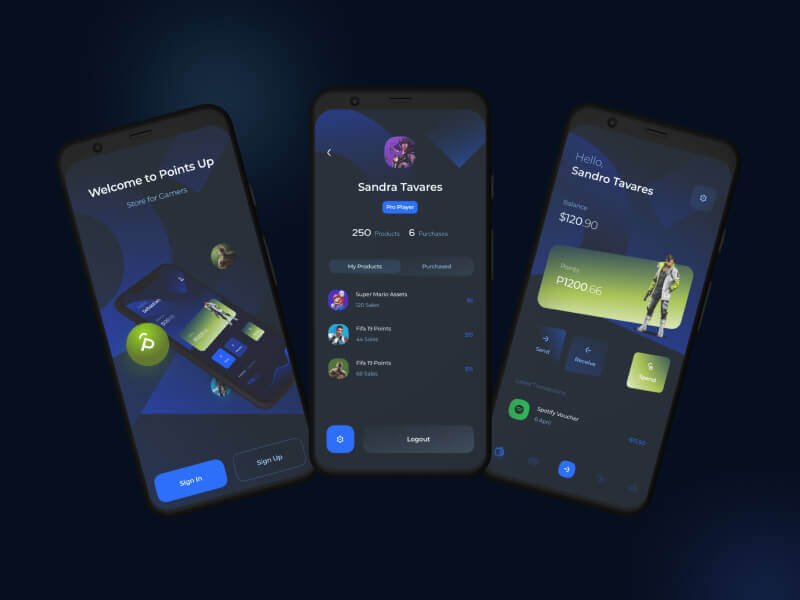

However, if you can precisely spot such toxic stocks, you may gain by resorting to an investing strategy called short selling. This strategy allows one to sell a stock first and then buy it when the price falls.
While short selling excels in bear markets, it typically loses money in bull markets.
So, just like identifying stocks with growth potential, pinpointing toxic stocks and offloading them at the right time is crucial to guard one’s portfolio from big losses or make profits by short selling them. Heska Corporation HSKA, Tandem Diabetes Care, Inc. TNDM, Credit Suisse Group CS,Zalando SE ZLNDY and Las Vegas Sands LVS are a few such toxic stocks.Screening Criteria

Through a wide variety of mobile applications, we’ve developed a unique visual system and strategy that can be applied across the spectrum of available applications.
So, just like identifying stocks with growth potential, pinpointing toxic stocks and offloading them at the right time is crucial to guard one’s portfolio from big losses or make profits by short selling them.
Heska Corporation HSKA, Tandem Diabetes Care, Inc. TNDM, Credit Suisse Group CS,Zalando SE ZLNDY and Las Vegas Sands LVS are a few such toxic stocks.Screening Criteria
18+ Years of Experience
2001 – 2011
Pursued my Master’s, focusing on advanced computing concepts, research, and innovation. This phase strengthened my expertise and fueled my drive for tech leadership.
Explored programming, algorithms, and software development, shaping my analytical thinking and technical expertise.
Started my journey in tech with a strong foundation in computer sciences. This was where my passion for technology first took shape.
2007 – Present
As the Founder & CEO, I drive innovation, growth, and excellence in tech solutions.
I designed and implemented complex software solutions as a Software Architect.
I advanced to Senior Software Engineer, leading projects and refining my technical skills.
I started my career as a Software Engineer, building a strong foundation in software development.

Collaborated with Sajjad Ahmed and his team! Must say that my experience was incredible as they kept me in the loop throughout the process and helped me streamline my business operations with advanced features. Highly Recommended!

It was challenging to have a reliable collaboration but fortunately, we have worked with Sajjad Ahmed and his team. He collaborated with us to integrate legacy systems that improved business operations. Thank you for your ongoing support!

I have worked with multiple professionals but I admire the communication skills of Sajjad Ahmed and the way he fulfills his commitment. Looking forward to more collaboration ahead!

Thanks to Sajjad Ahmed for helping us upgrade our system & eliminating the complexity of our business operations. Their attention to detail & custom solutions helped me achieve my business goals!
Featured
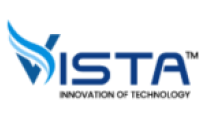



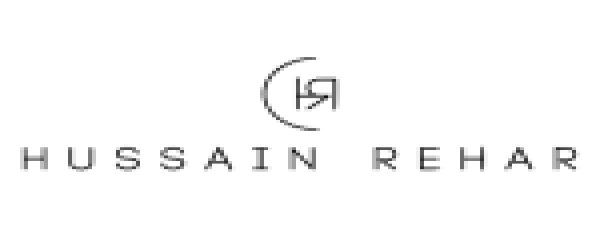





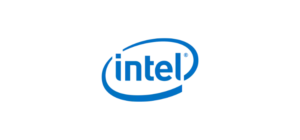



Featured
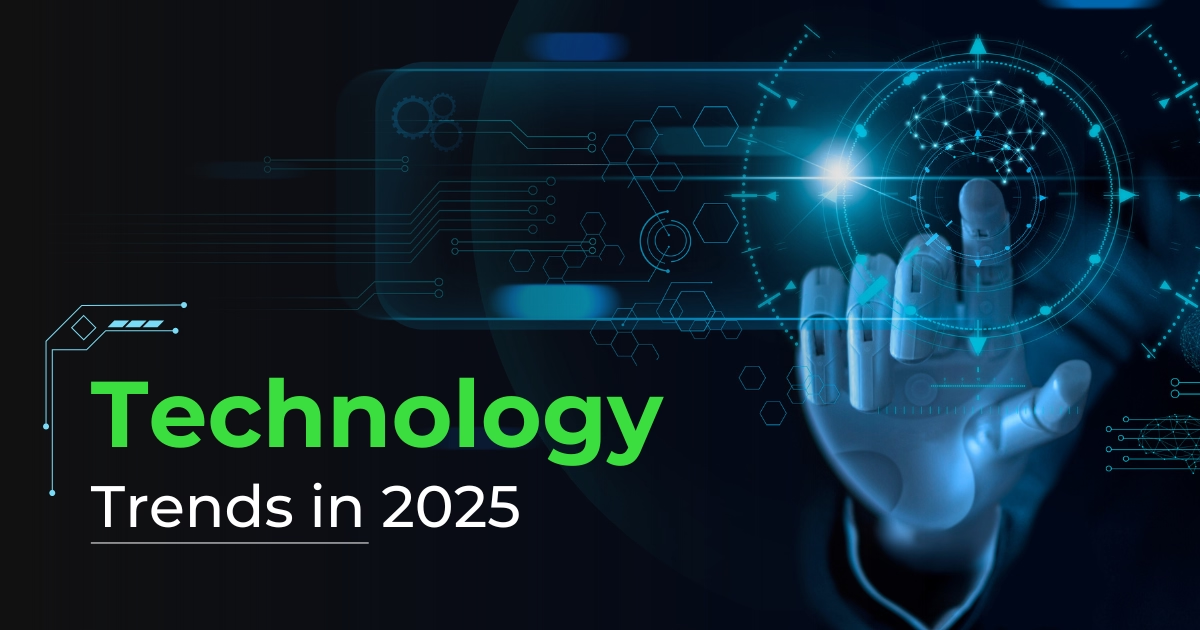
In 2025, technology is improving and growing rapidly than ever. For businesses, the shift to new technology trends is not a choice; it has become a necessity for survival. These trends are not only deciding the future of businesses but also redefining the role of professionals.
According to Gartner’s research on the strategic technology trends, innovations in technology are increasing businesses’ success. However, global IT spending is increasing by 9.8% every year.
What does this mean for you? It’s clear: staying updated with the latest technology trends is very important in the digital era. In this blog, I will explain that exploring these technology trends and knowing the right skills helps you grow in your career. The following are the top technology trends for 2025.
Generative AI is the top technology trend in 2025. It creates human-like content, from text and images to audio and video. Further, it has the potential to create complex simulations. Moreover, generative models such as GPTs have applications in content creation, design automation, and the development of user-interactive experiences.
However, this technology increases productivity. It also provides a new approach to problem-solving, customer engagement, and creativity. In 2025, businesses and enterprises will continue to integrate generative AI into their workflows. Further, it provides personalized services at scale to improve performance.
Augmented Reality is a new technology in 2025. It adds digital texts, images, and sound into the real world using devices such as mobile phones, tablets, and laptops. AR offers more engaging, interactive experiences with advanced AR glasses to users and improvements in mobile devices.
Moreover, industries such as retail, real estate, and education are using AR to make learning, shopping, and exploring easier and more engaging. With AR, users can add digital information to what they see in real life, mixing with the virtual world.
Enhanced Virtual Reality (VR) technologies provide users with realistic experiences in the virtual world. VR is becoming popular in gaming, training, and therapeutic contexts. It provides improvements in display resolutions, motion tracking, and interactive elements.
Latest VR systems have lighter headsets and longer battery life, which makes them more comfortable for users.
Whenever you hear the word Blockchain, do you associate it with cryptocurrency? Blockchain was initially centered on Bitcoin, but this technology is finding its application in other mainstream industries. This technology trend has removed third-party involvement and minimizes fraud risks. It provides users with transparency and enhances security. Moreover, blockchain plays a vital role in powering the metaverse, Decentralized Finance (DeFi), voting systems, supply chain tracking, digital identity, NFTs, and managing secure medical records.
The metaverse is a new technology trend in 2025 that is transforming the way people interact, conduct business, and interact digitally. It integrates virtual reality (VR), augmented reality (AR), blockchain, and AI to form immersive spaces in which users can engage with each other through digital avatars.
Companies are adopting the metaverse in virtual meetings, online shopping, education, and entertainment. Moreover, other industries like real estate, retail, and the games industry are utilizing it to provide interactive experiences to customers. In the future, the metaverse will redefine digital ownership, social interaction, and even workplace collaboration.
With rapid digital transformation and technological trends, new and advanced cyber threats are also increasing. Artificial intelligence has become a crucial element in enhancing cybersecurity. It automates the complex processes for detection and responding to threats.
Moreover, it analyzes a large amount of data for complex patterns, early threat detections, and implementation of real-time defenses. This trend is significant in addressing the growing frequency of cybersecurity threats.
Extended reality combines the real and virtual worlds with the latest technologies such as Virtual Reality (VR), Augmented Reality( AR), and Mixed Reality(MR). It helps people to have realistic training without any risk.
Industries such as healthcare, aviation, and manufacturing are widely using XR to practice real-life solutions. This technology makes training more effective, engaging, and also saves money.
IoT means connecting everyday objects such as lights, fridges, cars, or watches to the internet to send, receive, and share data. In businesses, IoT (Internet of Things) technology is used to connect devices and sensors that collect data and information.
By connecting devices, sensors, and tools to the internet, businesses are making better and smarter decisions. It helps businesses to track performance, reduce waste, improve safety, and minimize costs. It can detect issues before a machine breaks down. As technology trends grow, using IoT helps businesses become more efficient, smart, and competitive.
Do you know what the future of the internet is? The answer lies in the new technology trend, which is called Web 3. It is the next version of the internet that gives users more power and control, instead of the companies.
In Web 3.0, websites and apps are built on blockchain technology instead of central services. It means that all data belongs to the user. There is no central authority such as Google, Facebook, or banks.
Cloud technologies allow you to design, construct, and operate workloads within the cloud ecosystem. This technology uses microservices, immutable infrastructure, containers, and declarative APIs. However, many businesses are shifting to this trend to work better and faster. With cloud-based tools, they can save files online, use apps without installing them, and work from anywhere. This helps save time and money.
Cloud platforms such as AWS, Microsoft Azure, and Google Cloud also offer scalable benefits for AI, big data, and remote collaboration. These platforms have become essential for modern businesses.
Machine learning is a type of new technology that allows computers to learn from data and make decisions. It works by analyzing patterns in the data and using them to improve over time. For example, when YouTube suggests videos or when online stores recommend products, that’s machine learning at work.
This technology helps businesses save time, make smarter choices, and offer better services. As part of today’s technology trends, machine learning is used in many areas such as healthcare, finance, customer service, and more.
AI automation automates repetitive tasks, analyzes data, and makes decisions automatically with less human involvement. With machine learning, natural language processing, and robotic process automation (RPA), companies can optimize their operations.
The technology enables companies to reduce costs, minimize errors, and improve their productivity. It is also becoming common in healthcare, finance, manufacturing, and customer service sectors. However, it is another leading technology trend in 2025.
Technology is growing fast, and these future technology trends bring great career opportunities in 2025. Therefore, learning about these trending technologies and gaining the right skills will help you succeed in tomorrow’s job market. These trends are full of opportunities, and those who stay updated will have a better chance of succeeding.
Beyond career growth, these innovations also empower businesses to work smarter, cut costs, and create more value for customers. Whether you’re an individual looking to advance your career or a company aiming to stay competitive, embracing these trends will unlock new possibilities for growth and innovation.
Let’s turn tech trends into growth with a software architect who delivers results!
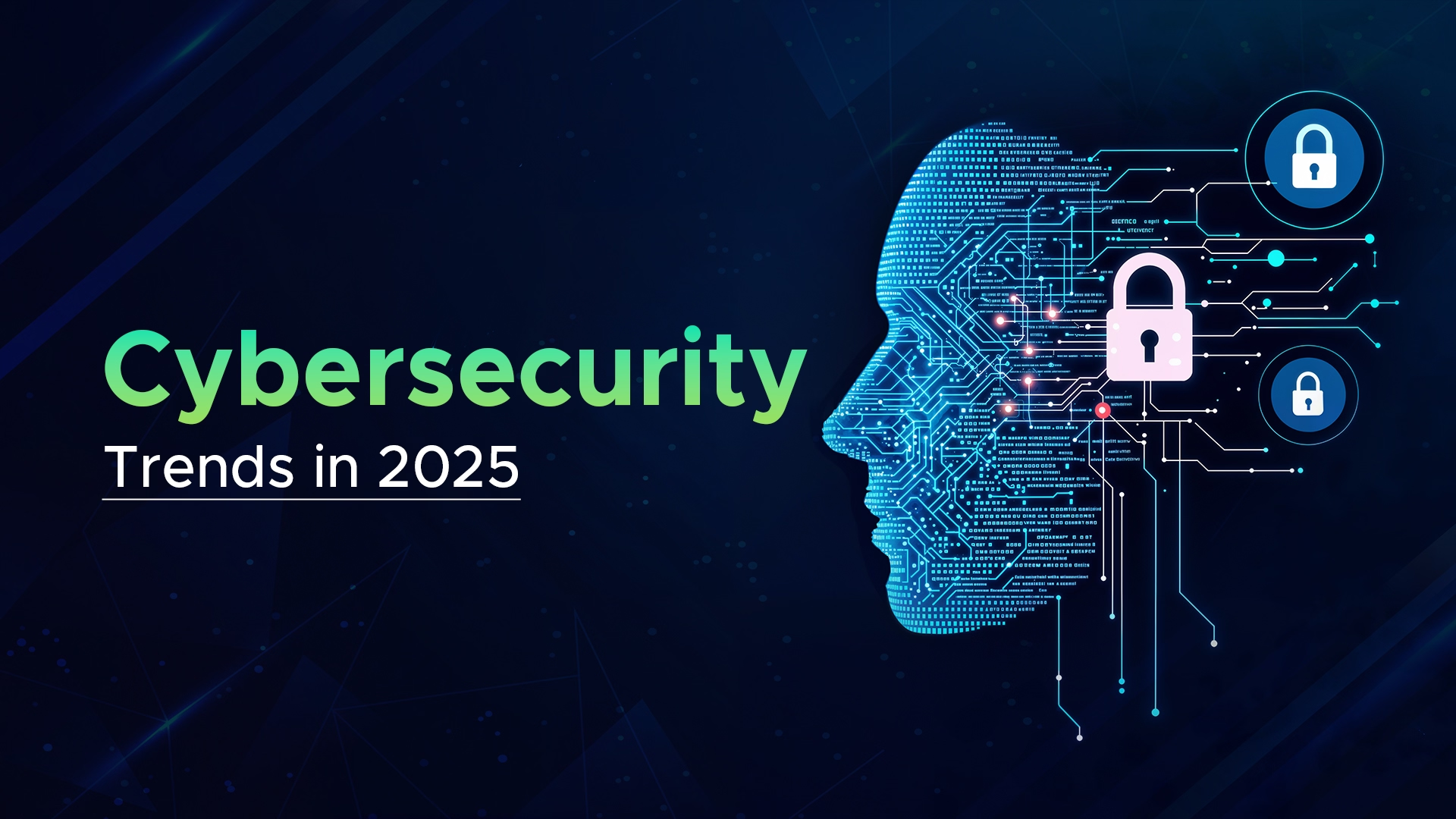
Research reveals that 17 percent of cybersecurity threats have increased since last year. This shows a steady rise in cybersecurity risks. With the trend of remote work and businesses shifting to cloud-based technologies, these data flows have become an attractive target for hackers. That’s why it is crucial for businesses to learn about top cybersecurity trends.
According to Gartner’s forecast, IT spending will reach $5.1 trillion in 2024 globally, which shows an increase of 8% since 2023. However, keeping updated with the latest cybersecurity trends has become crucial for organizations. As data breaches become more frequent and cyber threats increase, organizations are putting themselves at risk for massive financial damage by ignoring emerging threats.
In this blog, I will discuss key cybersecurity trends and their impacts on global businesses.
Cybersecurity trends are the latest ways in which organizations and companies are protecting their data, devices, and systems from online threats. In the world of technology, we rely on technology for our workflows. However, it provides new chances for cyberattacks on financial systems and communication networks. So, organizations are updating their security to stay protected from future threats.
As more people are working remotely, online threats are getting more complex. Here are the key reasons that highlight the importance of cybersecurity.
Hackers are now using smarter ways to attack. They do not use files or step-by-step plans. Therefore, traditional security tools are not able to address modern cybersecurity threats. By staying updated on the latest cybersecurity trends, you can use stronger security methods, such as tracking unusual behavior or using “zero trust” systems that don’t automatically trust anyone.
With the rising trend of remote work, people often use public Wi-Fi, and hackers have more ways to break in. The threats include phishing, stealing data, or hacking into personal devices. By staying updated on the latest network security trends, companies can use stronger protections like secure VPNs and device security tools. It makes remote workers safer and less likely to be targeted by cybercriminals.
GDPR and HIPAA regulations have introduced severe penalties for the violation of cybersecurity. New threats, such as advanced ransomware tests, determine the security system of the company. By following cybersecurity trends in 2025, your business can stay ahead of these rules and avoid problems. If you don’t maintain cybersecurity regulations, you could face legal trouble and serious damage from data breaches.
To deal with these emerging security threats, it is very important to stay updated with the trends in cybersecurity. Let’s discover them one by one.
Cybersecurity is the practice of deploying people, processes, policies, and technologies to protect organizations, their business systems, and sensitive information from digital attacks.
These emerging issues can be AI-driven malware that requires modern strategies to overcome. Below are a few highlights of data security trends:
Quantum Computing has the potential to break the latest encryption. So, hackers and states save the stolen data for later use with the help of quantum computing. However, the latest trends in cybersecurity are more focused on protecting data against future quantum attacks. The post-quantum cryptography helps to keep confidential data safe and secure.
Scammers now use fake audio and video, and pretend that they are leaders or famous people. They use this trick on employees during calls or video meetings to get money or share passwords. Since video calls are common in remote work, this type of scam is a serious risk. To stay safe, companies need to train their staff about data security trends and use two-step verification to confirm identities.
Cloud threats are one of the greatest cybersecurity trends in 2025. The rapid adoption of the remote workflow also brings new security risks. If settings are wrong or updates are missed, hackers can break in through just one weak spot. Their main purpose is to steal data or add harmful code. Moreover, research reveals that the average cost of a data breach is $3.86million. That’s why it’s important to check data security during development (called “shift-left” security).
Some hacker groups offer ready-made tools for anyone to launch ransomware attacks. It means more attacks are happening. They can seriously harm businesses and demand huge payments. Experts say that RaaS (Ransomware-as-a-Service) is a major cybersecurity trend, and the average cost to recover from an attack is now around $2.73 million. To stay safe, companies need to keep backups offline, with cybersecurity trends, and separate parts of their networks.
Criminals use Machine learning to alter code in real-time to prevent detection. As a result, some threats have deeper installation. They have the potential to avoid security checks. Moreover, traditional cybersecurity threats are no longer detect these cybersecurity threats. However, modern cybersecurity teams use smart tools to spot unusual behavior.
Multi-factor authentication (MFA) is considered one of the most secure methods for verifying identity. However, cybercriminals are continuously finding new ways to bypass it. This authentication is carried out via SMS or phone calls. That’s why, in 2020, Microsoft advised users to stop using phone-based MFA. They recommend using app-based authenticators and security keys. Therefore, many banks and other organizations use application-based MFA, such as Google Authenticator, Authy, and others, to address cybersecurity.
IoT means connecting everyday life objects such as lights, cars, and fridges with the internet to collect, send, and receive data. The expansion of IoT creates new opportunities for cybercrimes. It is expected that in 2026, there will be 64 billion IoT devices installed in the world. Like laptops and smartphones, many IoT devices have processes and storage capabilities. This growing network makes IoT security more important than ever for protecting personal and business data.
If your organization wants to protect data, maintain customer trust, and avoid expensive system failures, it’s important to follow the latest cybersecurity trends and implement tailored software solutions with built-in security technologies. As new risks expand, attackers are quickly using the latest methods, such as AI-driven malware and fake messages, to trick employees.
To stay safe, businesses should use strong defenses like zero-trust systems, AI tools to detect strange behavior, and regular software updates. Companies that take early action are much better at stopping cyber threats before they cause harm.
Let’s build stronger defenses with a software architect who designs smart cybersecurity strategies.
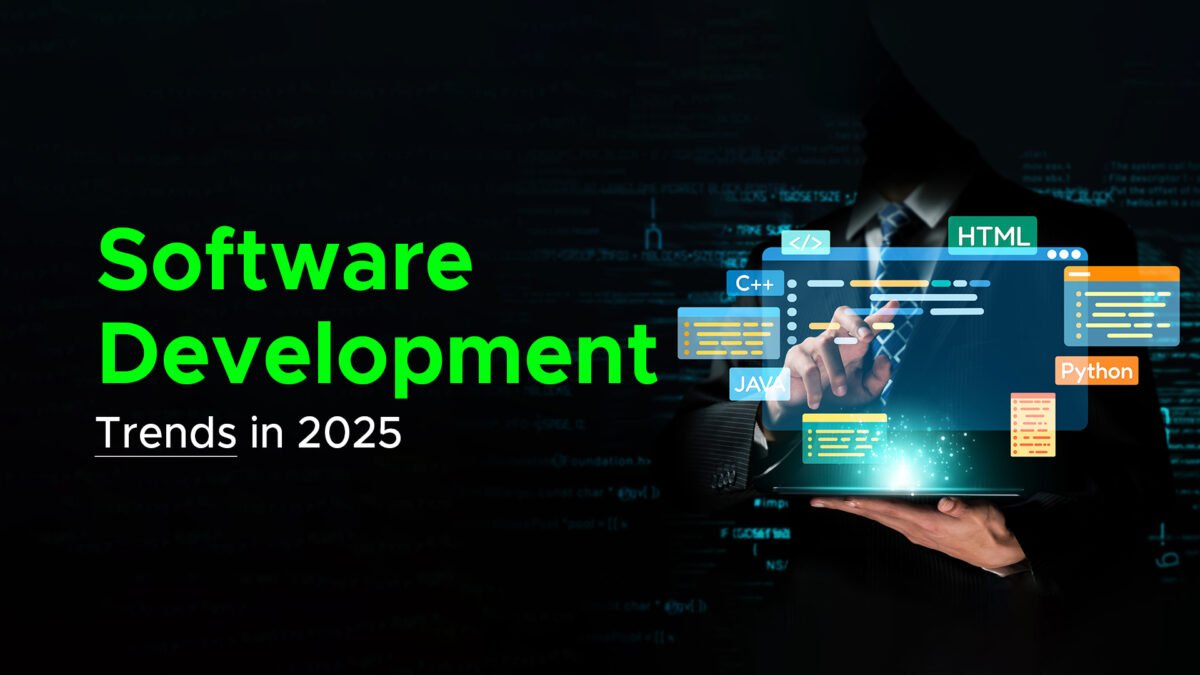
In 2025, software bugs resulted in $2.08 trillion loss for businesses and SMEs. Moreover, the financial loss does not stop here. It causes critical business systems to go down, customers start losing trust in enterprises, competition increases, and investors withdraw shares from the market.
It is not a surprise that software development companies are increasing at a fast rate. Many companies in the software development industry are still using outdated approaches, but those that have adopted modern trends are leading the market.
In this blog, I will break down 6 futuristic key software development trends in 2025. They have the potential to solve the latest challenges and drive long-term growth of your business in the market.
By 2026, 75% of the large enterprises will have switched to low-code platforms. Moreover, according to Forbes, at Google, AI now generates over 25% of new code for its products. It does not mean that developers are no longer needed. Instead, it means that software engineers’ roles are changed to write optimized code more quickly and efficiently.
However, the rise of microservices tells a similar story in the software industry. Additionally, a report showed that 29 % of businesses migrated or integrated to more scalable, flexible systems with the help of microservices.
When it comes to security, the trend is equally transparent. Software development teams that prioritize security at the initial stage of development have a 30 percent reduction in cybersecurity threats.
Change is coming, and how long will it take you to adapt to these latest trends in software technology? Will you lead the change, or find it challenging to keep up with the competitors?
AI is not a replacement; it is a coding companion of humans to perform repetitive tasks. Engineers are more focused on creative problem-solving. The AI industry is growing at an annual rate of 36.8%. It is expected to reach the market value of $150.2 billion by 2030. This growth only transforms the way of writing code.
Companies using AI coding assistants have claimed that it has reduced the standard development time by 30-40%. It means that developers with AI assistance will excel at coding over those who aren’t using AI.
Blockchain was centered on cryptocurrency. There is a twist that blockchain has entered into mainstream development. Its decentralized structure is designed to solve trust problems of users without the involvement of a third party.
However, developers are building identity verification solutions, smart contracts, and voting systems to minimize fraudulent risks. Therefore, the next generation of software enterprises is using blockchain as standard infrastructure in software development.
AR/VR is not confined to the game industry. Now, it has implications in the software industry as well. Online education, virtual in-store windows, and shared design studios are becoming the standard features in software enterprises. By 2028, the AR/VR market can attain a market value of $58.1 billion. It is expanding by 10.98 percent every year.
Moreover, progressive development teams are developing AR interfaces for industrial maintenance, medical visualization, and customer service applications. Companies with these technologies will lead their competitors.
Conversational interfaces and sentiment analysis are becoming mainstream applications with the help of NLP in software development. Furthermore, the NLP industry is rapidly growing due to voice assistants and language tools. It will reach $68.1 billion by 2028. Moreover, customer service systems, analytics dashboards, and productivity applications in advanced companies are already integrated with natural language.
However, it has reduced the gaps between human and computer interaction. Development teams are focused on building applications with features of how humans talk.
Cybersecurity is not a last line of defense. It is the basis of the latest security development in software development. Cyber attacks targeting software deficiencies have increased by 400% under COVID-19. Businesses are making user security their top priority. Therefore, the cybersecurity market can grow to $298.5 billion by 2028. Moreover, proactive development organizations have adopted a “shift-left” security approach.
This reduces costs by 60% or more than post-deployment security. It has become a trend that most successful custom software solutions prioritize users’ security through every update.
The development framework has shifted from “build then deploy and shift to cloud” to “build within the cloud-based ecosystem”. That’s why the use of microservices to structure applications is becoming a mainstream approach. Moreover, the productivity of development is increased by 38 percent in cloud computing. It enables fast scaling and resilience, and businesses can tailor to market changes efficiently.
CFOs are facing the new reality that custom software reduces its value more rapidly than its assets. Without regular updates, the $2 million application has lost value within 18 months. This rapid decline in the software industry forces finance leaders to rethink capital investment and ROI in the digital world.
This trend will bring a new type of risk. The cyberattack on Colonial Pipeline resulted in $4.4 million ransom payment. But the insurance covered only $2.1 million. The CEO appeared before Congress and explained how software choices are becoming individual security issues.
However, do you also think about talent? The disparity is increasing rapidly. Blockchain developers are taking 310% more than conventional developers. However, hiring talented employees is not the job of HR anymore; leadership also needs to focus on it.
Executives already have hard questions: Is our software development competitive or technical debt? Will our existing team be able to deal with software development trends? What will happen if our competitors adopt these trends before us?
Those organizations that are adopting these trends have a future in the software industry. The smart investor not only wants to establish applications but also to establish a business in the market.
Do you want to build smarter with a software architect who understands your goals? Let’s connect.
Let’s Connect &